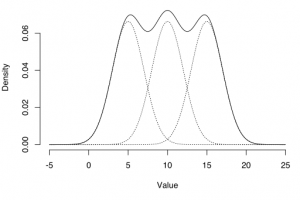Have you ever wondered how scientists and researchers make predictions about the future or look for patterns in data? The answer lies in statistical modeling. The definition of statistical modeling is to use of mathematical models and statistical assumptions to generate sample data and make predictions about the real world. In this blog post, we will explore what a statistical model is and how it can be used to identify patterns in data.
Statistical Model Definition
A statistical model is a collection of probability distributions on a set of all possible outcomes of an experiment. This means that the model helps determine which results are likely to occur when given certain conditions. For example, if you are forecasting the weather, you would use a statistical model that takes into account factors such as air pressure, temperature, humidity, etc. to come up with a prediction. In other words, it uses probability distributions to create an understanding of how likely certain outcomes are under certain conditions.

How is Statistical Modeling Used?
Statistical modeling can be used in many different fields such as economics, finance, biology, engineering, and more. It can help us identify patterns in data that can be used to make predictions about future events or trends. For example, economists may use a statistical model to predict stock prices based on market trends or sales figures from previous years. Similarly, biologists may use a statistical model to study population growth by looking at past data on birth and death rates for different species over time.
Conclusion
In conclusion, statistical modeling is an incredibly powerful tool that helps us understand our world better by identifying patterns in data and making predictions about future events or trends. By using mathematical models and probability distributions, researchers are able to gain insight into how certain variables interact with each other. Whether you’re interested in economics or biology, understanding how statistical models work can help you better interpret data sets and make informed decisions about your research projects or business strategies.